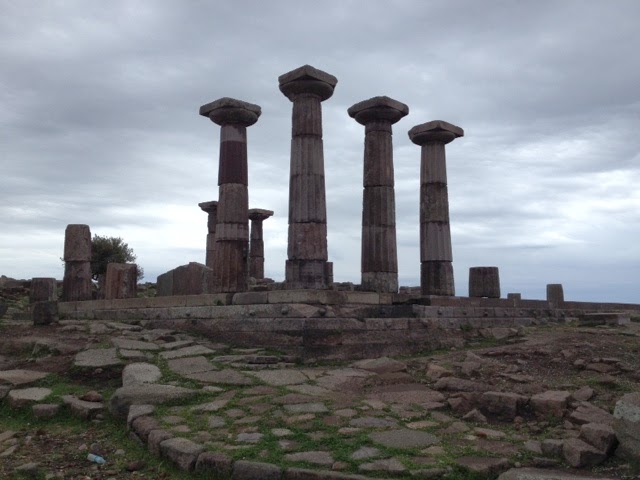Despite the relative amount of space, the villages and towns are crowded, with small, twisty streets. The streets come alive in the morning and evening, with some streets closed off to motor vehicles. But, it is otherwise quite relaxed with little activity. There is a "siesta" period after lunch, lasting about 4 hours - and we have been caught out, as even cafés and restaurants have closed given that it's off peak season.
The island's industry is largely agricultural, with olives (and olive oil) and ouzo being its main products. The economy however is in trouble, and many shops are closing down. In conversation with one shopkeeper yesterday, he said that he is trying to close down in a month, not even waiting for tourist season. What he will do afterwards he doesn't know.
There is a sense of despair and despondency around in the shops; probably due to the economy. Shopkeepers and shop attendants often come across as grumpy or disinterested; as if they don't care about customers. Inevitably they have a sale, and it probably is a closing down sale.
While the Turkish economy is certainly not as vibrant as it used to be; the situation in Lesvos is a stark contrast to the vibrancy across the sea. Whereas Troy and Pergamon had bus loads of tourists, we didn't come across a single other visitor - Greek or otherwise - in any of the attractions we visited.
It is not as if there is nothing to see or do here - and many of the attractions on the Turkish side are inherently linked to Lesvos. Yet, Turkish tour operators have got something right, or the Lesvos municipality has for something wrong.
While the overall Greek economy certainly influences Lesvos, there should surely be more positive impact with it's historical and geographical closeness to Turkey. I am not sure why it doesn't - it could be due to Euro or bilateral politics - but it has certainly impacted Lesvians far more than their Turkish neighbors across the sea.

















































